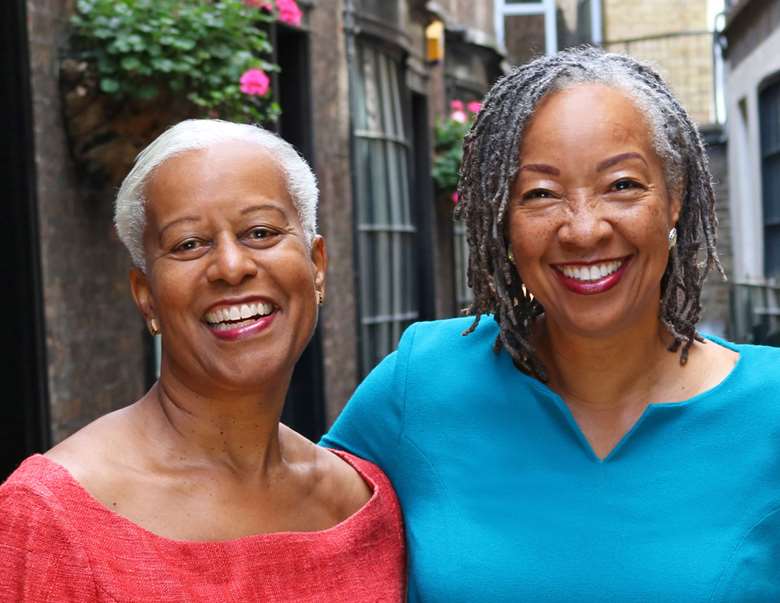What do we mean by inclusive language?
Florence Lockheart
Wednesday, June 22, 2022
Jane Oremosu and Maggie Semple OBE talk us through how we can make our music organisations more inclusive

Playwright and poet Ntozake Shange once said, ‘I’m a firm believer that language and how we use language determines how we act, and how we act then determines our lives and other people’s lives.’ When we wrote My Little Black Book - A Blacktionary we thought carefully about the choice of words we included in its glossary of terms and phrases and how to give them meaning through our definitions.
Our definition of inclusive language is the use of words that deliberately include, avoid assumptions and bias around race, ethnicity, and cultural heritage. Inclusive language is intentional and takes some practice to get right. We firmly believe that language is a signifier of thought processes that in turn become behaviours. We appreciate that there are many language systems. It is often argued that music has its own language, for example, it has a syntax and rules for ordering its elements. In this article, when we talk about language, we are referring to what is spoken and written.
A word that is often associated with the classical musical industry is the word ‘excellence’. It is a word that denotes status and is ascribed to the few. Yet when used alongside ‘inclusion’ it can take on one of two meanings. Either that excellence is diluted, and standards are lowered when it includes inclusion or that excellence cannot be achieved unless it embraces inclusion. It’s worth considering which meaning you associate with these words.
One of the best ways to approach inclusive language is to hold ‘listening events’ where a small group come together informally to discuss specific words or phrases that they would like to understand better. No-one needs to be an expert as the aim is to consider words and phrases that are in the DNA of the organisation. The inclusive language discussion could be seen as a reset activity. You can take a similar approach when working to diversify your repertoire. You can start by asking your colleagues to search for ‘hidden composers’ both historical and contemporary, then host a lunch and learn discussion. However, a word of caution. It would be very easy to solely ask people who represent the range of diversities in your organisation for input, and this requires courage and resilience from colleagues and could become burdensome.
A fundamental requirement of human nature is to be ‘seen and heard’. Language plays a key role in one’s sense of belonging, how we feel and therefore respond is largely determined by our interactions with each other and the environments we immerse ourselves in. Language is not just external; we all have an internal dialogue and our interactions with each other impacts our internal self-conversation - it can perpetuate existing negative perceptions and low self-worth. Jane comments ‘having spent most of my formative years to young adulthood in Lagos, Nigeria, it came as a surprise when I arrived in England to find that I was in fact Black. I adjusted my internal narrative through style of speech, appearance, behaviour, and expression in ways to optimise the comfort of others in exchange for fair treatment.’ This is known as Code Switching and it has psychological and physical repercussions on the health and mental wellbeing of an individual.
The debate about diversity and inclusion is not a new discussion in arts organisations. Maggie says ‘As director of education and training at the Arts Council of England in the late 1990s, the debates then were as complex as they are today. Such as, encouraging and supporting arts organisations to think differently about their artists, their repertoire, and their audiences. Acknowledging that the arts ecology represents and relies on diversity in all of its forms to thrive. Understanding why it is important to see diversity with inclusion. Today, it is the innovative organisations who are willing to discuss their policies and structures through an inclusive lens. Exploring systemic matters can be challenging just as the arts can be.’
When we work with organisations, we start with creating a safe environment where people test their use of language and deepen their understanding without fear of judgement. We can establish a positive environment quickly as we take a few words from our book during a Blacktionary Lab workshop and give examples of how the word is used. Let’s take ‘equality’ and ‘equity’. Equality is where an individual or group is given the same resources or opportunities. Equity means that resources and opportunities are allocated to reach an equal outcome. Many organisations are still in the equality stage of their inclusion journey and have further to go to reach the equity stage.
A last point. Giving deliberate thought to how we use language before we utter words and statements, making it inclusive and uplifting is the first step to changing cultures and environments regardless of the industry. When we learn a new language, we take the time to understand meanings and intentions and give thought to what we want to say and how to say it - why should communication in our own language be any different?
Jane Oremosu and Dr Maggie Semple OBE are co-authors of My Little Black Book - A Blacktionary. You can find out more here.